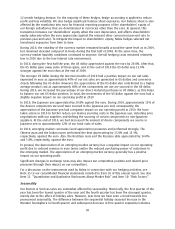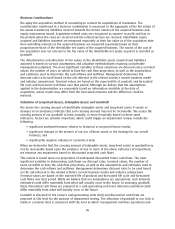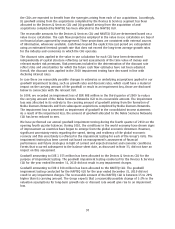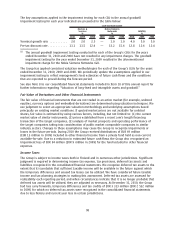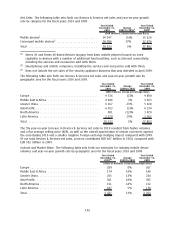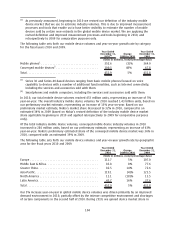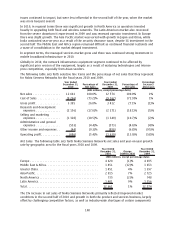Nokia 2010 Annual Report Download - page 100
Download and view the complete annual report
Please find page 100 of the 2010 Nokia annual report below. You can navigate through the pages in the report by either clicking on the pages listed below, or by using the keyword search tool below to find specific information within the annual report.We recognize tax provisions based on estimates and assumptions when, despite our belief that tax
return positions are supportable, it is more likely than not that certain positions will be challenged
and may not be fully sustained upon review by tax authorities.
If the final outcome of these matters differs from the amounts initially recorded, differences may
positively or negatively impact the income tax and deferred tax provisions in the period in which
such determination is made.
Pensions
The determination of our pension benefit obligation and expense for defined benefit pension plans is
dependent on our selection of certain assumptions used by actuaries in calculating such amounts.
Those assumptions are described in Note 5 to our consolidated financial statements included in
Item 18 of this annual report and include, among others, the discount rate, expected longterm rate
of return on plan assets and annual rate of increase in future compensation levels. A portion of our
plan assets is invested in equity securities. The equity markets have experienced volatility, which has
affected the value of our pension plan assets. This volatility may make it difficult to estimate the
longterm rate of return on plan assets. Actual results that differ from our assumptions are
accumulated and amortized over future periods and therefore generally affect our recognized expense
and recorded obligation in such future periods. Our assumptions are based on actual historical
experience and external data regarding compensation and discount rate trends. While we believe that
our assumptions are appropriate, significant differences in our actual experience or significant
changes in our assumptions may materially affect our pension obligation and our future expense. The
financial impact of the pension assumptions affects mainly the Devices & Services and Nokia Siemens
Networks segments.
Sharebased Compensation
We have various types of equity settled sharebased compensation schemes for employees. Employee
services received, and the corresponding increase in equity, are measured by reference to the fair
value of the equity instruments as at the date of grant, excluding the impact of any nonmarket
vesting conditions. Fair value of stock options is estimated by using the BlackScholes model on the
date of grant based on certain assumptions. Those assumptions are described in Note 24 to our
consolidated financial statements included in Item 18 of this annual report and include, among
others, the dividend yield, expected volatility and expected life of stock options. The expected life of
stock options is estimated by observing general option holder behavior and actual historical terms of
Nokia stock option programs, whereas the assumption of the expected volatility has been set by
reference to the implied volatility of stock options available on Nokia shares in the open market and
in light of historical patterns of volatility. These variables make estimation of fair value of stock
options difficult.
Nonmarket vesting conditions attached to the performance shares are included in assumptions about
the number of shares that the employee will ultimately receive relating to projections of sales and
earnings per share. On a regular basis, we review the assumptions made and revise the estimates of
the number of performance shares that are expected to be settled, where necessary. At the date of
grant, the number of performance shares granted that are expected to be settled is assumed to be
two times the amount at threshold. Any subsequent revisions to the estimates of the number of
performance shares expected to be settled may increase or decrease total compensation expense.
Such increase or decrease adjusts the prior period compensation expense in the period of the review
on a cumulative basis for unvested performance shares for which compensation expense has already
been recognized in the profit and loss account, and in subsequent periods for unvested performance
shares for which the expense has not yet been recognized in the profit and loss account. Significant
differences in employee option activity, equity market performance, and our projected and actual net
sales and earnings per share performance may materially affect future expense. In addition, the value,
99



